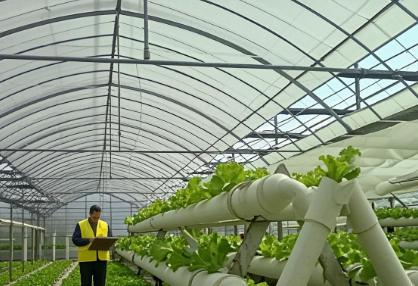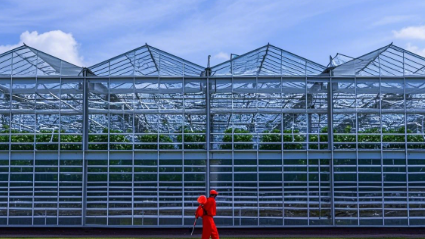Hey there, greenhouse growers! Are you tired of battling pests with chemicals and looking for a more sustainable solution? Biological control might just be the answer you're seeking. This method harnesses the power of nature to manage pests, keeping your greenhouse healthy and eco-friendly. Let's explore how you can leverage natural predators and microorganisms to protect your crops.
What is Biological Control?
Biological control, or biocontrol, is a method of managing pests using natural enemies. These can be predators, parasites, or pathogens that target specific pests. Unlike chemical pesticides, biological control agents are typically safe for humans, pets, and the environment. They also help reduce the risk of pests developing resistance, which is a common issue with repeated chemical use.
Key Benefits of Biological Control
Eco-Friendly: Biological control agents are natural and do not leave harmful residues on your plants or in the environment.

Targeted Action: Biocontrol agents are often specific to certain pests, minimizing the impact on non-target organisms.
Sustainable: By reducing the need for chemical pesticides, biological control supports long-term sustainability in your greenhouse.
Cost-Effective: While initial costs may be higher, the long-term savings from reduced pesticide use and improved crop health can be significant.
Common Biological Control Agents
Predatory Insects
Ladybugs: These beneficial insects are voracious predators of aphids, consuming hundreds in their lifetime.
Predatory Mites: Species like Phytoseiulus persimilis are highly effective against spider mites.
Lacewings: These insects prey on a variety of pests, including whiteflies and aphids.
Parasitic Insects
Parasitic Wasps: These tiny wasps lay their eggs inside pest insects, effectively controlling populations of caterpillars and other soft-bodied pests.
Nematodes: Beneficial nematodes can control soil-dwelling pests like fungus gnats and root maggots.
Microbial Agents
Bacillus thuringiensis (Bt): A naturally occurring bacteria that is highly effective against caterpillars and other soft-bodied insects.
Beauveria bassiana: A fungus that infects and kills a wide range of pests, including thrips and whiteflies.

Implementing Biological Control
Identify Your Pests: Accurate identification is crucial. Use sticky traps and regular inspections to monitor pest populations.
Choose the Right Agents: Select biocontrol agents that are effective against your specific pests. Consult with a local supplier or extension service for recommendations.
Release Strategically: Introduce biocontrol agents at the right time and in the right quantities. Follow the guidelines provided by the supplier for best results.
Monitor and Adjust: Regularly check the effectiveness of your biocontrol agents. Be prepared to make adjustments or introduce additional agents if needed.
Combining with Other Practices
Biological control works best when integrated with other pest management strategies. Here are a few tips:
Sanitation: Keep your greenhouse clean and free of debris to reduce pest hiding spots.
Physical Barriers: Use insect netting to prevent pests from entering your greenhouse.
Cultural Practices: Maintain healthy plants through proper watering, fertilization, and pruning.
Conclusion
Biological control is a powerful tool in your greenhouse pest management arsenal. By harnessing the power of nature, you can effectively manage pests while reducing your reliance on chemical pesticides. This not only benefits your plants but also contributes to a healthier environment. Give biological control a try and see the difference it can make in your greenhouse!
Welcome to have a further discussion with us.
Phone: +86 15308222514
Email: Rita@cfgreenhouse.com
Post time: May-30-2025







 Click to Chat
Click to Chat